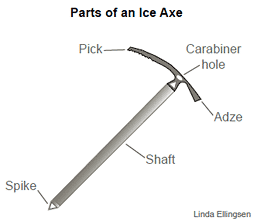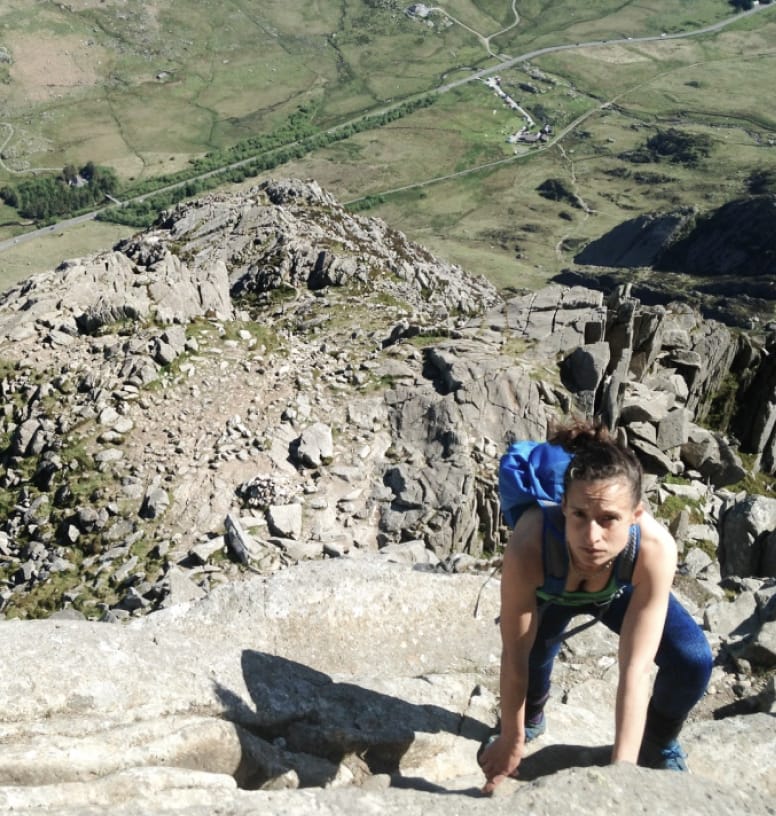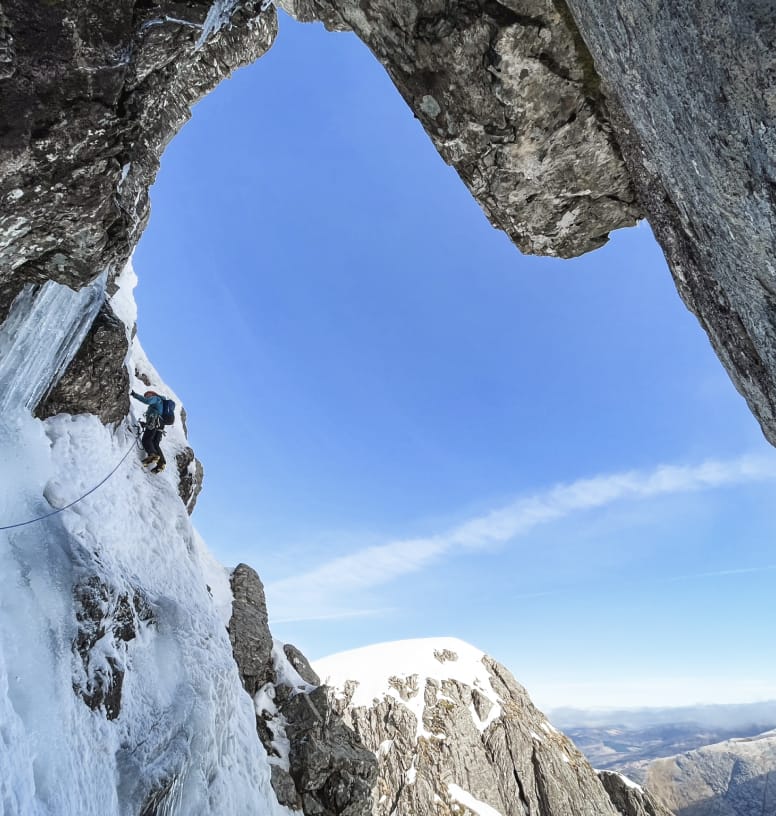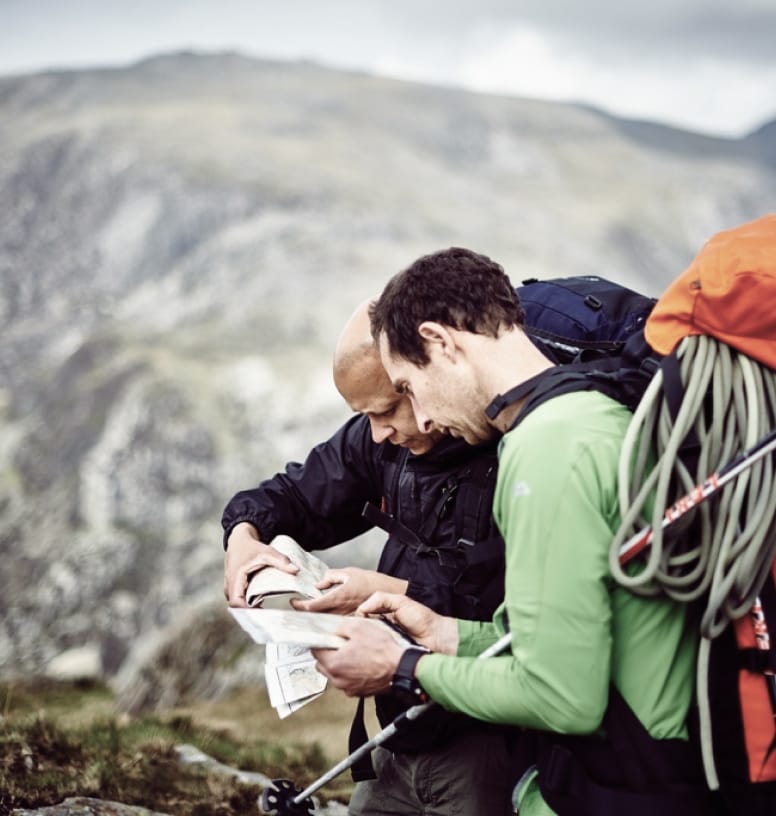07775 853 348
ANATOMY OF THE ICE AXE
First need a basic understanding of its components.
Head
The head is comprised of the pick, adze and the carabiner hole and is usually made of a steel alloy. In tools specialized for steep ice and mixed rock-and-ice climbing, the adze is rarely used and can be replaced with a hammer. This weight savings can be a real plus.
Pick
This is the sharp end of the ice axe, used for hooking and swinging into snow or ice. It is also the part of the axe used during a self-arrest. A pick is described by its curvature angle and its clearance.
- The curvature angle is the angle of pick relative to the shaft of the tool. A 65° to 70° angle is typical of mountaineering axes whereas a more acute angle of 55° to 60° is common to technical axes and tools.
- The clearance of a pick can be either positive or negative. This is determined by comparing the angle of the pick tip to the shaft. These days, the reality is that clearance makes little difference since 1) most picks are positive clearance, and 2) both positive- and negative-angle picks will penetrate snow.
Adze
The broad, shovel-like adze is predominately used to cut steps or seats in snow or ice. It serves as a comfortable grip platform while hiking with the axe in a self-belay grasp (with the pick facing forward). This is the reverse position from the self-arrest grasp (when the adze is facing forward), which readies you to perform a self-arrest if you lose your footing on a steep slope.
Carabiner hole
This hole in the head of an ice axe is used to affix an ice-axe leash or sometimes to clip a carabiner.
Shaft
These are made of aluminum, carbon fiber or steel. Each offers a tradeoff in terms of weight and strength. Heavier shafts are usually stronger, although lightweight materials such as carbon fiber are extremely strong (but more expensive).
- Straight shafts are better for plunging, self-belaying or for use in an anchor. Straight-shafted axes are best for general mountaineering.
- Curved shafts resemble a small arc and are better designed for swinging into ice. Curved tools are best for technical mountaineering and ice climbing.
Some shafts are covered either partially or wholly in rubber to provide extra grip. Athletic tape can be used to create a grip on an axe or you can wear gloves with rubber palms to create extra friction.
Spike
The metal tip of an axe is the sharp point that penetrates snow and ice. It is mostly used to maintain balance while walking on snow or ice, much like a trekking pole. A few axes forgo having a spike (by cutting the shaft at an angle) to save weight. In many steep-ice and mixed climbing tools, the spike has been permanently removed. This shaves weight and increases safety when using the tool in a reverse stein-pull (using the tool upside-down as a lever on rock.)
CHOOSING A LENGTH
Ice axes are measured in centimeters. Each size reflects the distance from the tip of the axe to the top of the head. Typically, axes are available in size increments of 5cm from 50cm to 75cm. The correct length is based on your size and your type of activity.
BY YOUR SIZE
One popular way to find the correct length of an axe is simply to hold it while standing relaxed. The spike of the axe should barely touch the ground when you stand fully upright with your arms at your sides. Someone who is shorter (5’8″ or so) might be able to use a 65cm axe for general mountaineering, whereas a taller person (say 6’2″) might want a 75cm axe for the same task. It’s also possible that 2 people of the same height might have a different reach and therefore need different lengths. A person’s “ape index” is the difference between their overall height and wingspan (measured fingertip to fingertip.)
If you would like to learn more, or you are interested in a winter course, please follow the link below:







